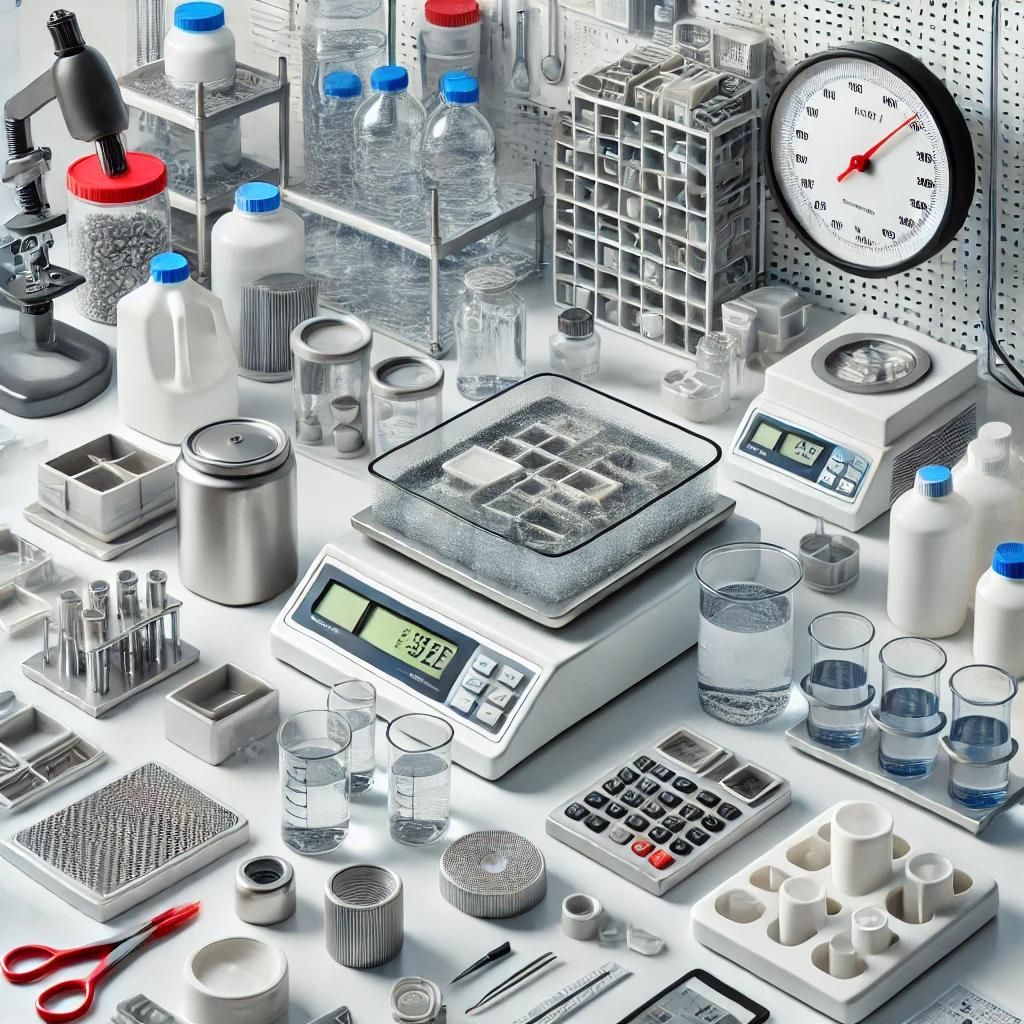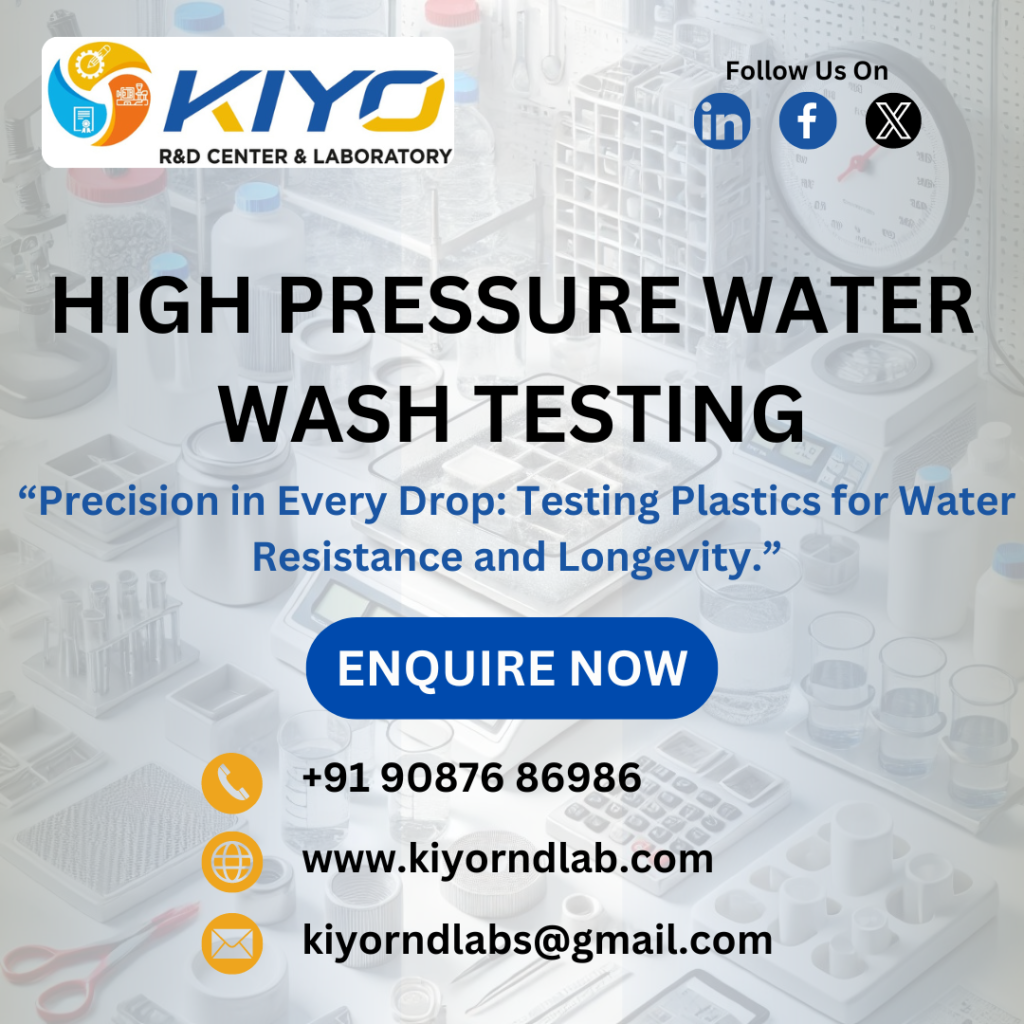High Pressure Water Wash Testing As Per ASTM D570
Enhancing Material Performance Through High Pressure Water Wash Testing as per ASTM D570
Introduction
- In industries where materials are constantly exposed to moisture, water absorption can significantly impact the durability and performance of products. High Pressure Water Wash Testing, guided by ASTM D570, is an essential process that assesses a material’s resistance to water absorption. By following this standard, manufacturers can ensure their products maintain structural integrity and performance in demanding environments, such as construction, automotive, and marine industries.

What is ASTM D570?
ASTM D570 is the standardized test method for determining the water absorption characteristics of plastic materials. This method involves exposing test specimens to water under specified conditions and then measuring the amount of water absorbed. By providing consistent testing procedures, ASTM D570 helps manufacturers and researchers evaluate how much water a plastic material can absorb when subjected to prolonged exposure or high-pressure water.
Importance of High Pressure Water Wash Testing:
Water absorption can compromise the mechanical properties of materials like plastics, leading to swelling, cracking, or loss of strength. In industries like electronics, automotive, and aerospace, where moisture resistance is crucial, understanding a material’s water absorption capabilities can prevent failures and costly repairs. High Pressure Water Wash Testing ensures that materials are suited for their intended applications, especially in environments exposed to high humidity or direct water contact.
The Testing Process:
The ASTM D570 test procedure involves several steps:
- Specimen Preparation: Test specimens are cut to specific dimensions, typically in the form of a square or circular piece of plastic.
- Drying and Conditioning: Specimens are dried in an oven to remove moisture before the test to establish a baseline.
- Water Immersion or Exposure: Specimens are submerged in water or subjected to high-pressure water washing for a specified period, either at room temperature or elevated temperatures.
- Final Measurement: After the water exposure, the weight of the specimen is measured again to calculate the percentage of water absorbed.
Benefits of ASTM D570 Testing for Materials:
- Improved Product Reliability: The test ensures that the materials used in critical applications can withstand exposure to water without significant degradation, ensuring longer-lasting products.
- Optimized Material Selection: Manufacturers can use the results to select the most suitable materials for applications in wet environments, reducing the risk of material failure.
- Compliance with Industry Standards: Adhering to ASTM D570 ensures that products meet industry requirements for moisture resistance, which is especially important for certifications and product warranties.
Applications Across Industries:
High Pressure Water Wash Testing is crucial in many sectors, including:
- Construction: Ensuring that plastic materials used in insulation, roofing, and piping systems maintain their integrity under moisture exposure.
- Automotive: Testing materials used in vehicle interiors, electronics housings, and exterior components to prevent water damage.
- Marine: Verifying that plastic components used in boats and underwater applications resist water absorption and maintain performance.

Conclusion
- High Pressure Water Wash Testing, as per ASTM D570, plays a pivotal role in determining the water resistance of plastic materials. By adhering to this test method, manufacturers can ensure their materials are fit for purpose, capable of enduring wet environments, and resistant to moisture-related degradation. This testing not only helps enhance product reliability but also builds confidence in materials that face challenging, moisture-laden conditions.

